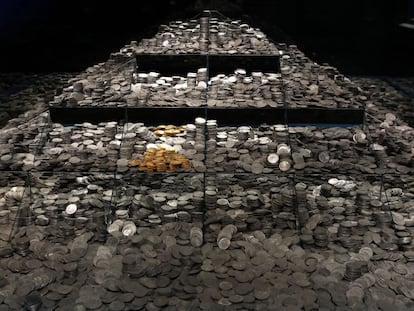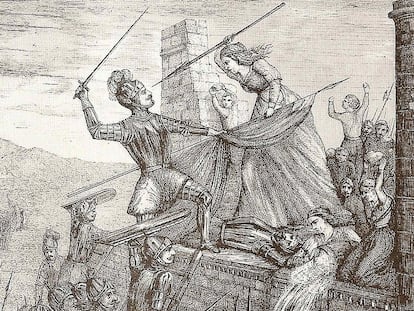How looted treasure helped heritage protection in Spain: The side benefits of the ‘Odyssey case’
When US treasure hunters raided a ship sunk in 1804, it prompted a reckoning by Spanish authorities, who are now world leaders in submerged asset conservation
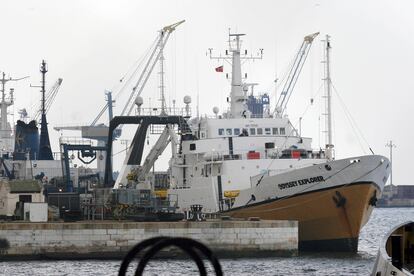
On stormy days, the Underwater Archeology Center (CAS) in Spain’s southern city of Cádiz is reminiscent of an early 20th-century ship at the mercy of the waves. The windows of this former spa overlooking La Caleta beach creak in the wind, and the rough seas are a reminder of the tragedies of bygone days.
Just in the area within eyesight, there are 87 sunken shipwrecks dating back to many different periods of time, 19 of which have been archeologically located while the rest are known about through existing documents. If the radius is extended to the entire gulf of Cádiz, the figure is closer to “around 2,000″ according to Milagros Alzaga, the head of CAS.
The well-publicized case of a US treasure hunting company named Odyssey that plundered one of these shipwrecks 14 years ago has had an unexpected benefit: Spain has since become a world leader in the legal protection of its underwater heritage. The effort is also creating new scientific challenges.
“We have become a role model and the world looks to us as a point of reference,” says Mariano Aznar, a professor of public international law and an expert on the subject. But reaching this status involved years of litigation in the US, where in February 2012 a Florida court recognized Spain’s ownership of 500,000 gold and silver coins taken by Odyssey from Nuestra Señora de las Mercedes, a frigate that was sunk by the British navy on October 5, 1804 off the southern coast of Portugal. The US company had named the recovery project Black Swan in an effort to conceal the wreck’s real identity.
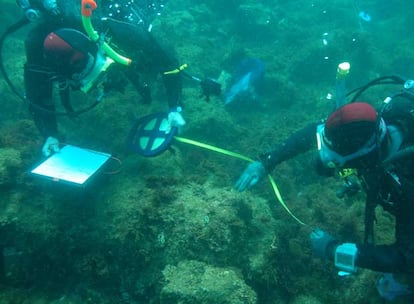
However, a Spanish court was recently forced to drop an ongoing probe into Odyssey’s alleged destruction of the archeological site because the statute of limitations had passed; the court expressed “discomfiture” and “anger” at the unusual circumstances surrounding the legal procedures of the case, which required cooperation from the US that was not forthcoming.
“The case was a bit sad, but if you look at the positive side, it’s been a wake-up call for everyone,” says the head of CAS, which answers to the Andalusian Institute for Historical Heritage (IAPH).
The people in charge of Odyssey Marine Exploration, then headed by Greg Stemm, were aware of the ship’s history, which is linked to the Spanish-French defeat at the Battle of Trafalgar in 1805. They were knowledgeable about the conflicts of power between the relevant institutions and about the existing legal loopholes in Spain.
“They took advantage of the administrative weaknesses,” says Aznar about Odyssey but also about another US company that used a ship named Louisa to scour the coast of Cádiz in 2004 in search of treasure.
Following two years of meetings and discussions, a volume published in the summer of 2010 under the name “Green Paper on the Underwater Heritage Protection Plan” eliminated a lot of this lack of coordination. “That plan provided support to regional governments, which lacked an underwater archeology map,” notes Alzaga.
On the legal front, the combined efforts triggered a wave of reinforced regulations. At the regional level, each government has “aligned even further” with the 2001 UNESCO Convention on the Protection of the Underwater Cultural Heritage. National maritime legislation has added a provision stating that salvage rules do not apply to submerged archeology. And the changes are not over yet: an amendment to the 1985 Spanish Historical Heritage Law announced in June will include the need for supervision from the Culture Ministry during any extraction of a cultural asset from the seabed.
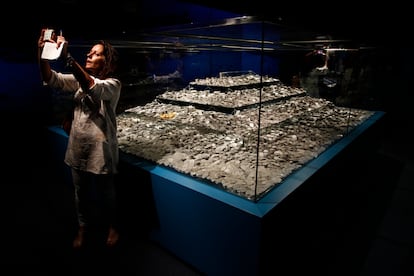
More awareness, fewer digs
This increased protection, coordination and knowledge has also permeated Spain’s law-enforcement agencies. The Navy now plays a much larger role, and the incorporation of the Integrated External Surveillance System – a network of cameras and sensors in the Strait of Gibraltar and the Canary Islands used to control immigration and drug trafficking – has shielded much of the Gulf of Cádiz, home to the greatest concentration of sunken wrecks in need of protection, against treasure-hunting pirates. “The professionalism these days is spectacular,” notes Aznar.
If the Odyssey case has been revived again in the collective imagination, it is not just because of the court probe that was recently closed in Spain, but also thanks to La Fortuna (or, The Fortune), a TV series by filmmaker Alejandro Amenábar based on The treasure of the Black Swan, a graphic novel by Paco Roca.
The Odyssey case also created more social awareness. Very few local divers dare plunder the sea bottom these days, and alert citizens often “call in if they see something strange,” notes Alzaga, of CAS. “People now view the underwater heritage as something that belongs to them and cannot be traded with.” But Aznar believes that more could be done to educate the public. “We need to show young people that [the seabed] is the biggest museum in the world. Maybe we can’t access it for economic and technological reasons, but a day will come when it will be possible. You can only love what you know, and at that point we will be able to force our political class to be more proactive.”
There is still room for improvement. The archeologist Javier Noriega, whose company Nerea won a EU award in 2009 for social responsibility, was part of the private prosecution in the case against Odyssey in Spain. Noriega admits he is disappointed with the things that happened during the investigation, but would rather focus on the future now through studies showing submerged sites as places of memory and war graves. Last week, Noriega defended this vision at Cyanis, a brand new Ibero-American congress on underwater heritage that was held in Cádiz.
Every shipwreck, whether caused by battles, raging seas or accidents, typically involves dozens of deaths. This is something that Odyssey did not take into account when it raided Nuestra Señora de la Mercedes “without shame or respect,” says Alzaga. This was one of Spain’s arguments at the Florida trial, and Aznar believes that it would have been a key argument in Spain if the second case had prospered. In any event, Noriega defends that underwater archeology should also incorporate this dimension as a way “to give people an identity, to reconstruct their stories.”
The head of CAS is familiar with that perspective. Construction work at the port of Cádiz in 2012 turned up three sunken ships from the 16th to 18th centuries. Alzaga was able to identify the Piccola Vassalla, the first ship sunk by Francis Drake in 1587, during his attack on the city. An exploration of the shipwrecks found remains of a woman’s skull and a man’s femur, and these are still being analyzed for clues about everyday life in the 16th century. The CAS has not carried out new surveys since then, although it has made documentation visits to sites.
Noriega defends the need for more underwater digs, particularly at the site of the wrecks of the Battle of Trafalgar, some of which are largely unknown to researchers. “We need to investigate, intervene, conserve and publish information about more wrecks in order to shed light on the stories of the people who died on them,” he says. For him, it would be almost an act of poetic justice following his disappointment over the shelving of the case against Odyssey. And ultimately it would be a way “for a problem to turn into an opportunity.”
Tu suscripción se está usando en otro dispositivo
¿Quieres añadir otro usuario a tu suscripción?
Si continúas leyendo en este dispositivo, no se podrá leer en el otro.
FlechaTu suscripción se está usando en otro dispositivo y solo puedes acceder a EL PAÍS desde un dispositivo a la vez.
Si quieres compartir tu cuenta, cambia tu suscripción a la modalidad Premium, así podrás añadir otro usuario. Cada uno accederá con su propia cuenta de email, lo que os permitirá personalizar vuestra experiencia en EL PAÍS.
¿Tienes una suscripción de empresa? Accede aquí para contratar más cuentas.
En el caso de no saber quién está usando tu cuenta, te recomendamos cambiar tu contraseña aquí.
Si decides continuar compartiendo tu cuenta, este mensaje se mostrará en tu dispositivo y en el de la otra persona que está usando tu cuenta de forma indefinida, afectando a tu experiencia de lectura. Puedes consultar aquí los términos y condiciones de la suscripción digital.
More information
Archived In
Últimas noticias
There is as much life left to discover on planet Earth as that which is already known
Dozens presumed dead, around 100 injured in fire at Swiss Alps bar during New Year’s celebration
Is porn for women different from conventional porn? We spoke to those who make it
Cartagena de Indias is sinking: What can the city do to mitigate it?
Most viewed
- David King, chemist: ‘There are scientists studying how to cool the planet; nobody should stop these experiments from happening’
- Reinhard Genzel, Nobel laureate in physics: ‘One-minute videos will never give you the truth’
- Oona Chaplin: ‘I told James Cameron that I was living in a treehouse and starting a permaculture project with a friend’
- Sinaloa Cartel war is taking its toll on Los Chapitos
- The Interoceanic Train, the Mexican alternative to the Panama Canal

